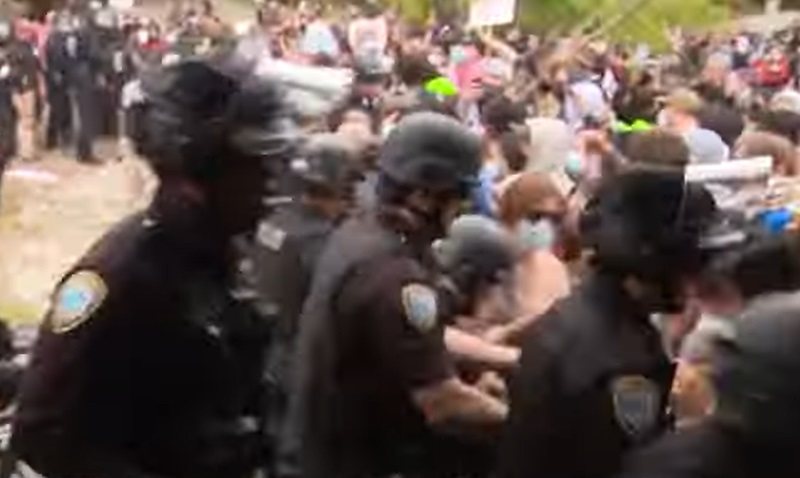
June 20th, 2024 is the official beginning of summer, but Memorial Day is the real kickstarter. For a significant part of the country, the heat of the season can be as much of an enemy as criminals. For cops working patrol, the additional 30 or more pounds of gear – especially the ballistic vests – can add to the misery. There are some garments and devices that help air circulate beneath the vest, but they may add more bulk and nuisance than their benefit.
Especially for neighborhood patrols, an open driver’s side window provides the officer with a better situational awareness of the sounds of distress, crashes, and gunshots. That makes the air conditioner strain. Even windows up can create a dangerous contrast to the outside heat when exiting the car to make a contact, especially in those cases where an officer has to bail out and run or wrestle.
Hopefully, citizens will be slow to criticize officers who are parked in shady places and making frequent stops to get a cold drink and later to make more bathroom stops. Sweat can be a real problem for vision and keeping a grip on equipment and shirtless suspects. The person who has no sympathy for the officer directing traffic on hot asphalt has no heart! And we know the risks to K9s in hot weather.
The CDC and OSHA have reams of warnings about the health hazards of extreme heat. This extends to all outdoor workers and affects the frequency of heat-related injury calls. Last year 2,302 people died from extreme heat. No matter what one’s opinion is about climate change, fatalities and heat injuries have reached record levels. Police officers are not immune whether from a sunburn, scalding seat belt buckle, or dehydration, extra caution is in order.
Sources also agree that violent crime increases with temperatures over 85 degrees. July of 2023 marked the highest number of violent deaths for officers, a pattern seen in previous years as well. This increase could be from longer periods of daylight, close quarter living as people stay inside with the AC, more people outside, biological increases in aggression, increased alcohol use, or all of the above. This includes murders, sexual assault, assault, and robbery. Burglaries also increase, perhaps because of vacant houses during vacations. Estimates of increased summer crime are as much as a 35% increase over other seasons.
Crime is not the only danger that increases during summer. Car crashes increase, too. July and August fatalities per mile driven are higher than in Spring or Winter. More cars traveling longer distances. More teen drivers on the road. More road construction. More distractions. And more drunk and drugged drivers. Drownings and other recreational accidents increase as summer fun outside crowds parks, lakes, and rivers.
Response time can increase during the busy summer months as well. Personnel shortages for uniformed officers as well as communications officers can see a significant call volume increase at the same time vacancies for first responders are taxing emergency services. The recruiting challenge for police officers is also being felt by EMS, 911 call centers, and the fire service.
In the past month leading up to summer, police have dealt with campus protests, ambushes, and rescues along with the usual mayhem. April saw an ominous 25 officer deaths from crashes, duty-related illness, and murder. As of this writing, two officers have been murdered in the first two weeks of May. Who knows what summer will bring?